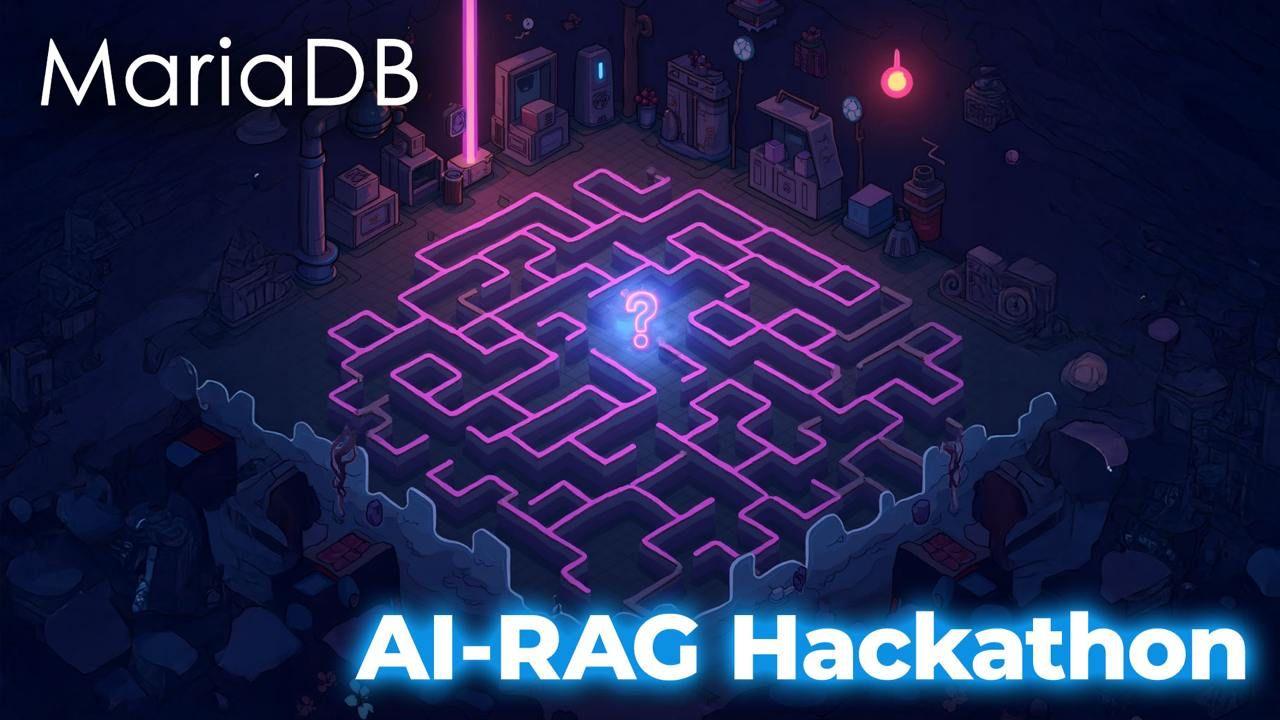Tag Archives: python
The Helsinki Python meetup on Tuesday 27th May was hosted by MariaDB Foundation with nearly 100 participants of the 2600+ members of the Helsinki python meetup community.
In addition to being a successful opportunity to mingle and learn python together, we finally got to announce the winners of the MariaDB AI RAG Hackathon! (winners posing in the feature photo of the blog)
Presentations: AI and MariaDB
We welcomed participants of the meetup with a brief introduction to what MariaDB is as a software, and the sponsoring parties: MariaDB Foundation, Open Ocean Capital and verkkokauppa.com.
…
Continue reading “Helsinki Python meetup with AI RAG and MariaDB Foundation”
The ideation phase of the MariaDB AI RAG Hackathon is nearing its deadline on Monday (by end of March).
We have several cool submissions so far. One is about combining the Knowledge Graph and LLMs, using MariaDB Vector Nearest Neighbour Search. Another one is about an “advanced context diff”, identifying the differences between two text corpuses based not on their literal wording, but on their content.
All of the current submissions are in the Innovation track. We would particularly like submissions in the Integration track – to add MariaDB to frameworks such as these, or other apps.
…
We are excited to announce a hackathon with MariaDB Vector and Python. Since we are reaching outside our bubble, let’s start from the beginning:
MariaDB, the open-source database powers the world’s most demanding applications, from Wikipedia to global financial institutions. Now MariaDB Vector is bringing AI-ready vector search natively into the open-source database world. MySQL users ahoy:
Our hackathon is your chance to explore AI possibilities with MariaDB Vector and Python. Whether you’re a developer, data scientist, or AI enthusiast, MariaDB Foundation invites you to build innovative AI applications, compete for prizes, and showcase your work.
…
Continue reading “Join our AI Hackathon with MariaDB Vector”
Python is my personal favourite programming language, at least this century. So when the opportunity presented itself to have a talk at PyConZA, off I went. Not to South Africa in person, for a 40 minute talk, though.
Technical challenges on Streamyard
It was a live presentation, streamed on Streamyard with chat on Discord. I complained of the bad connectivity I had in central Munich, much to the amusement of the South African audience, which evidently thought they were role models and market leaders when it comes to bad Internet.
…
Sometimes there is a need to combine data from different columns into one string. For example,
SELECT CONCAT(first_name, ‘ ‘, last_name) FROM employees;
This doesn’t look too bad, but can quickly get out of hand, if you need to do something more complex than that. For example, let’s say, we also need to mention the salary here:
SELECT CONCAT(first_name, ‘ ‘, last_name, ‘ -‘, CAST(FORMAT(salary, 0) AS VARCHAR(10)), ‘ ‘, currency) FROM employees;
This preview shows a new feature for MariaDB 10.7 that was developed as a part of Google Summer of Code (MDEV-25015) by Alan Cueva, together with his mentor Vicențiu Ciorbaru.
…
Continue reading “10.7 preview feature: Python-like string formatting”
My first encounter with the gdb command duel was on some old IRIX about 15 years ago. I immediately loved how convenient it was for displaying various data structures during MySQL debugging, and I wished Linux had something similar. Later I found out that Duel was not something IRIX specific, but a public domain patch for gdb 4.6 written in ’93 by Michael Golan. Unfortunately, it never got into gdb (for licensing reasons, so I’ve heard). Now the gdb 8 is out, and the patch, obviously doesn’t apply. Instead of fixing the patch, I’ve re-implemented Duel in Python, using gdb Python API and the Arpeggio parser. …
Continue reading “Duel: gdb vs. linked lists, trees, and hash tables”
Anyone who has peeked inside a gdb manual knows that gdb has some kind of Python API. And anyone who has skimmed through has seen something called “Pretty Printing” that supposedly tells gdb how to print complex data structures in a nice and readable way. Well, at least I have seen that, but I’ve never given it much thought. Still, one day, when I was typing:
(gdb) p/t table->read_set->bitmap[0] @ (table->read_set->n_bits+7)/8
for the umpteenth time I asked myself, “why the heck not?”, and so it begun…
(more…) …
Continue reading “Making life prettier with gdb PrettyPrinting API”


